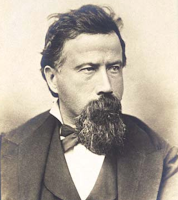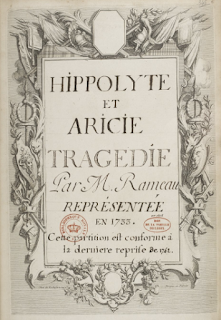Ponchielli - La Gioconda
ONP Bastille, Monday May 20 2013
Conductor: Daniel Oren. Production, sets and costumes: Pier Luigi Pizzi. Lighting: Sergio Rossi. La Gioconda: Violeta Urmana. Laura Adorno: Elena Bocharova. Alvise Badoero: Orlin Anastassov. La Cieca: María José Montiel. Enzo Grimaldo: Marcelo Alvarez. Barnaba: Claudio Sgura. Paris Opera Orchestra and Chorus. Hauts-de-Seine and Paris Opera Children's Choruses.
 |
| Ponchielli |
It’s unusual, for example, to hear a solid Verdi tenor like Marcelo Alvarez, in full control of his part, high notes and all. I should imagine you can count singers of his kind and quality on the fingers of one hand. (I have to admit I regretted having to come to La Gioconda to hear him: it would have been nice to have him in something more rewarding.) Who, too, now sings the title role? Violeta Urmana was announced sick but went on with the show anyway, and I wondered who might have been brought in had she pulled out. (Was Anja Silja still in town after Hänsel und Gretel? I’m sure she’d have been game.) As often in such cases, Urmana’s illness was barely noticeable; it may have added to the “shrieky” quality of the top notes and undermined the lowest ones, but all the usual medium was there – and the usual commitment, for which, as people who know me know, I give extra marks.
Orlin Anastassov, also announced sick, was more audibly affected (visibly as well: he looked decidedly unhappy during curtain calls) but even so we were definitely hearing a fine young Russian-style* bass with that distinctive Slav combination of clear timbre over cavernous volumes; a very different kind of voice (and physique) from the more monolithic (in a positive way) “Toreador” baritone of Claudio Sgura.
Elena Bocharova wasn’t perhaps quite as good as she ought to have been: after a resounding entry, her voice turned out to be occasionally uneven in projection (and she was a remarkably placid actress). But even so… And María José Montiel was perfect as La Cieca and loudly cheered at the curtain calls.
The chorus was at its best and the orchestra handled the score as if it were a precious object, with more care than is often the case. So as I said, musically this was a rare evening of old-fashioned grand opera, and I’ve no doubt that audiences who came before any of the principals were off-colour found themselves hearing a cast of unusually consistent strength.
It’s probably a well-worn cliché to say Pizzi’s productions are more decorative than dramatic. His tendency towards visual restraint and limited colour schemes (black, grey, cream, red, maroon, with the exception of La Gioconda’s royal blue dress) makes for a somehow “plain” (not also to say “80s”) experience, and his directing is limited to conventional dramatic attitudes, albeit soundly done.
His sets are neatly-built, sensible, legible and battleship grey: two canals with a bridge over each; one canal with a bridge at each end and a red ship at the rear; one canal with a very wide bridge in the middle; a rectangular island with a tomb and some cypresses. Gondola movements are beautifully managed, the prow rising and falling smoothly in response to the oar.
At the front, an elaborately-sculpted grey “sarcophagus” with statues in niches serves various purposes: letter-box for anonymous denunciations (through lions’ mouths), park bench for lovers, couch for drugged heroines… Figures in their 18th century costumes, masks and hats (sailors, citizens, gondoliers, commedia dell’arte players…) are silhouetted against the plain (when moonless), cream-lit backdrop.
The Dance of the Hours broke the costume colour code by introducing girls in flowing, sparkling, modern, rainbow-hued dresses (sensibly avoiding any risk of our being reminded of the ostriches in Fantasia) and two near-naked étoiles, painted gold. The ballet was athletic and – another rare event – cheered.
The last time I saw La Gioconda it was in Florence with Ghena Dimitrova in the mid-80s. It was nice, this week, to have an intellectually undemanding evening of solid, straightforward music-making of a now old-fashioned kind while steering clear of tinselly brocades and frothy Venetian gothic detail; but, with its rather stiff, uninspiring score, I think one Gioconda every 25 years is probably about right for me.
*I originally wrote just "Russian" but was corrected: he is Bulgarian.




Hello, I was there too :)
ReplyDeletejust a little (but in fact important) correction...Orlin Anastassov is Bulgarian, not Russian! :)like Ghena Dimitrova...great!
Very nice blog :)
Thanks very much for the correction. You see why I insist these are amateur impressions!
ReplyDeleteI don't see why you entitled your perceptive blog "We left at the interval...". You obviously saw the whole thing and even admired much of it.
ReplyDeleteYour blog shows up conspicuously on a Google search for this production and, unfortunately, the title will be all that most will read. The production deserved more ...
By the way:I saw it on video and loved it.